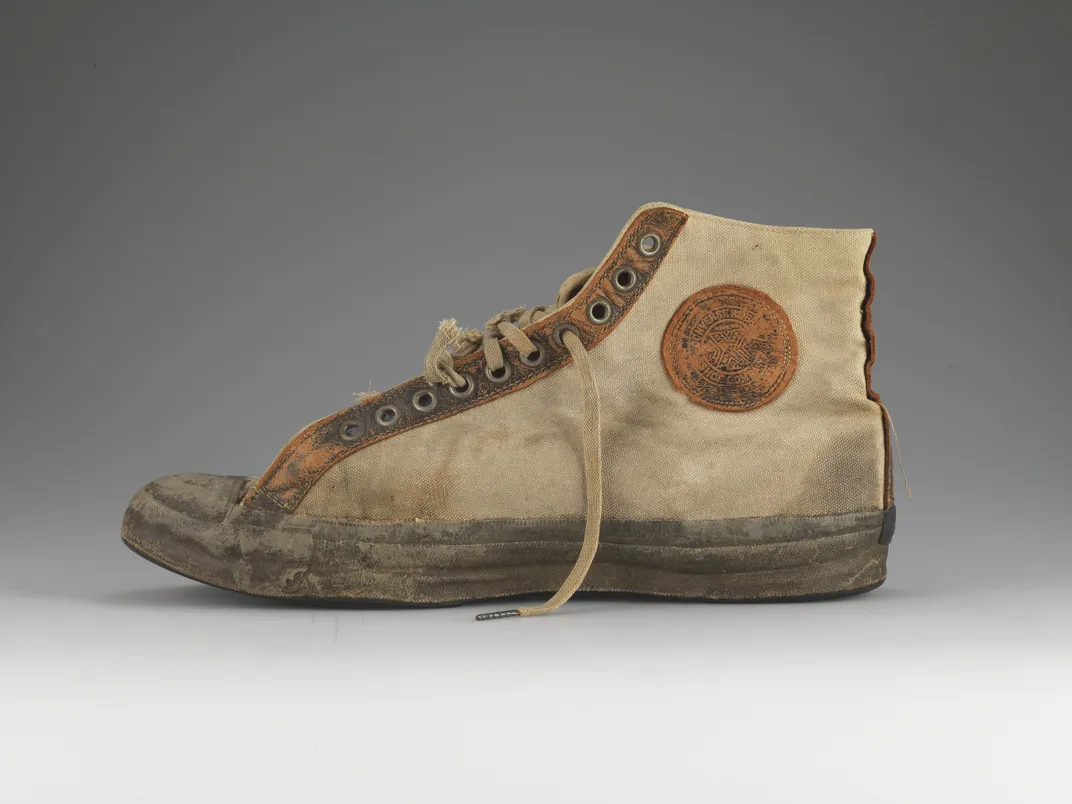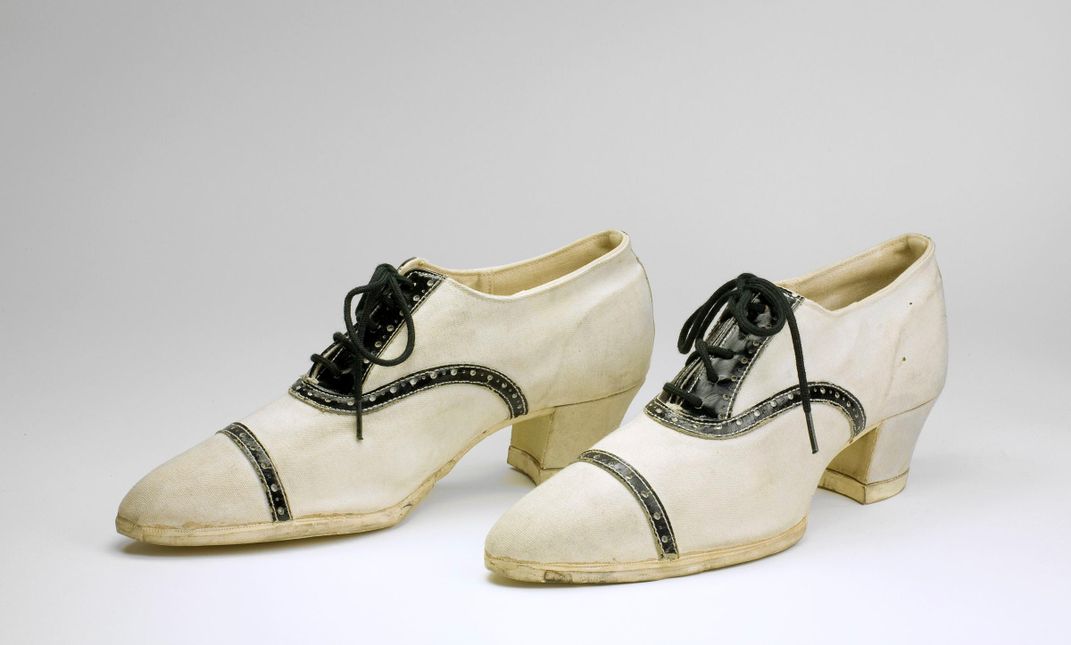Running Shoes Date Back to the 1860s, and Other Revelations From the Brooklyn Museum’s Sneaker Show
A show on sneaker culture at the Brooklyn Museum hypes its modern Nikes, but perhaps most fascinating are the historic kicks that started it all
/https://tf-cmsv2-smithsonianmag-media.s3.amazonaws.com/filer/1f/13/1f133701-ed72-4884-b5e8-a8f2386c28fb/2_dutton_and_thorowgood.jpg)
The world’s oldest existing running shoe looks suitable for a formal occasion, with smooth black leather and a stacked heel. But a closer look shows odd spikes emerging from the sole, which, along with a band of leather across the instep for added support, reveal its real purpose: competitive running. (The spikes may have been meant to help with traction.) The shoe, which dates back to the early 1860s, barely resembles today’s running footwear, yet it's a remnant from the beginning of our obsession with sneakers.
A new show at the Brooklyn Museum, “The Rise of Sneaker Culture,” has been getting attention for the modern classics and rare designer models on display. There’s a 1989 prototype of the famous Reebok Pumps, with the now-iconic miniature basketball shapes on the tongue, as well as an original Air Jordan I from 1985. (There's an entire section dedicated to that famous line, up to the Air Jordan 23.) The show also includes examples from the future of footwear, such as a prototype of an Adidas shoe made with discarded fishing nets found in the ocean. Designer sneakers line one part of the floor, too, including pop-art inspired kicks from Pierre Hardy that borrow from Roy Lichtenstein, as well as a pair designed by Kanye West.
To get at the history of sneaker culture, though—and our current global obsession with what shoes say about our style and our status—one has to look farther back. Near the display case with the oldest extant running shoe sits a surprisingly modern-looking Converse high-top from 1917. It’s a bit crumbly looking, but otherwise strikingly similar to what many of us wear now, 98 years later—at least, visually speaking. (Notably, Converse just announced that it has redesigned the classic for the first time since its 1917 debut.) But as curator Elizabeth Semmelhack argues, despite some superficial similarities, much has changed in terms of who wears sneakers and why.
“A lot of people assume that sneaker went from humble to prestigious,” Semmelhack tells Newsweek. Instead, she posits that sneaker-wearing started out as something prestigious, with the rise of upper-middle-class industrialists and their desire to express their status through leisure activities.

It was only after that privileged group adopted sneakers that wearing them began to catch on. Manufacturing the materials became easier (one small piece of text in the exhibit alludes to the exploitation of land and of colonized workers to cultivate rubber) and, over the decades, the rubber-soled footwear became more widespread. This coincided with an increased desire for fresh air and exercise as an “antidote to urban ills,” such as cramped living and working conditions.
Fascism may have helped spread the fitness craze as well, if in a sinister way. Countries such as Japan and Italy, the exhibit explains, began to put on “large outdoor demonstrations of physical fitness” meant to evoke connections between physical “perfection,” nationality and race. Meanwhile in the U.S., the years following World War II saw Baby Boomers using sneakers as a “signifier of youth.”
The objects on display also show how gender bias came into play. A pair of women’s “sneakers” from the 1920s look like fashion accessories, not shoes that anyone today would think to wear while exercising or playing sports. Although the ’20s marked the first time women were widely allowed to engage in athletics, some people were apparently concerned: If ladies participated in sport, wouldn’t it “detract from their femininity?”

And so, as this pair shows, manufacturers struck a compromise: creating shoes with rubber soles and some “masculine” detail work—but stuck on to a “feminine” high heel. The shoes are nearly 100 years old, but point to how women are still sidelined in both sneaker and sports culture today. As the museum puts it, “footwear endorsed by female athletes has had little to no impact on sneaker culture, and … the majority of the most coveted sneakers are not made in women’s sizes, to the frustration of female aficionados.”
Plus, the text explains, “There are also few women working in the field of sneaker design.” Today, companies largely redirect women to shoes that only refer to sneakers—like the wedges that have been popular the past few years—and yet “aren’t the real thing.” In an age where world-class female athletes still fight to earn the same as men and to get equal playing conditions, this style from the 1920s may not look so distant after all.
The Rise of Sneaker Culture runs at the Brooklyn Museum through October 4.
/https://tf-cmsv2-smithsonianmag-media.s3.amazonaws.com/accounts/headshot/michele-lent-hirsch.jpg)
/https://tf-cmsv2-smithsonianmag-media.s3.amazonaws.com/accounts/headshot/michele-lent-hirsch.jpg)